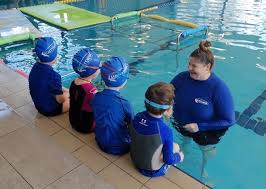Australia knows water. We live surrounded by it, swim in it, drink it—and sometimes, run dangerously short of it. That’s where level 7 water restrictions come in. While they’re rare, these extreme restrictions are a wake-up call about how critical water education really is.
That’s where a solid water safety course steps in—not just for preventing drownings, but for building a lifelong respect for our most essential natural resource. Whether you’re swimming, supervising, or simply living through a dry spell, the right knowledge makes all the difference.
Why Water Awareness Matters—Even Beyond the Pool
It’s easy to assume water safety is only for parents or swim instructors. But the truth is, water-related risks go far beyond swimming pools and beach flags. Floods, water tanks, rivers, aquaculture sites—even something as simple as a garden pond can pose real dangers if not treated with care.
And then there are times of drought. When a city hits level 7 water restrictions, outdoor water use can grind to a halt. No watering gardens, washing cars, or filling pools. The message is clear: water isn’t just about recreation. It’s survival.
Through a water safety course, participants learn to spot hazards in and around water. But they also learn something more subtle: how to respect water as a limited, life-giving resource.
The Foundation: What Does a Water Safety Course Cover?
Every water safety course begins with the basics:
- Recognising risk in different environments: pools, beaches, rivers, dams.
- Safe behaviours in and around water.
- Emergency responses, including CPR and how to assist someone in distress.
- Preventative practices—especially important in school, home, and childcare settings.
But the best courses also go deeper. They address water literacy: how water systems work, how drought affects supply, and how climate impacts safety conditions. This isn’t just useful knowledge—it’s essential civic awareness.
Enrolment in a water safety course is no longer limited to lifeguards or teachers. Courses now cater to:
- Primary and secondary students
- Sports coaches and club volunteers
- Workplace health and safety officers
- Community leaders and parents
The goal? Broad-based water competency across every corner of society.
From Level 1 to Level 6: Structured Learning, Life-Saving Skills
Most water safety course frameworks follow a staged structure, from beginner to advanced. Each level builds on the last, focusing on age-appropriate learning and real-world application.
Here’s a simplified breakdown:
- Level 1–2: Entry-level confidence building, floatation, and safe entry/exit
- Level 3–4: Basic rescue skills, understanding currents, treading water
- Level 5–6: Defensive swimming, basic CPR, recognising water emergencies
By the time learners reach advanced levels, they’re not just swimming—they’re spotting risks, making fast decisions, and helping others do the same.
Whether you’re aged five or fifty-five, completing a structured water safety course gives you lifelong skills that could one day save a life—including your own.
Water Scarcity and Safety: Two Sides of the Same Coin
It’s worth repeating: water isn’t just a fun day at the beach.
In Australia, prolonged droughts can lead to water restrictions of the highest level. Level 7 restrictions—rare, but not impossible—mean no outdoor use, strict rationing, and constant government monitoring.
What’s often overlooked is the connection between scarcity and safety.
During drought, more people turn to unregulated water sources—bores, rivers, tanks. These can be unfiltered, unsupervised, and unsafe. The risk of drowning or contamination increases, especially for children.
A water safety course can prepare communities for this. It educates participants about:
- Proper use of water tanks and rural dams
- How to supervise children near alternative water sources
- The dangers of stagnant water and infection risk
- Emergency response protocols in low-resource environments
This isn’t just theory. It’s survival education for Australia’s future.
A Nation-Wide Movement: Who’s Taking the Lead?
Across the country, local councils, aquatic centres, and schools have embraced water education as part of broader community health. Some states have gone a step further, offering subsidised or free training to regional communities.
Even the Australian Government has issued strategic reports highlighting the long-term value of water literacy. According to the National Water Initiative, integrated water management isn’t just about conservation—it’s about preparing for safe use under all conditions.
That’s why more workplaces and organisations are including water safety courses in their induction programs, especially those near coastlines or working in agriculture and construction.
Final Thought: Water Wisdom Starts Early
Drought or flood. Backyard pool or outback river. Water gives life, but it demands respect.
By investing in proper training through a recognised water safety course, Australians can move beyond fear and toward confidence, resilience, and readiness.
Whether it’s guiding kids through their first swim strokes or knowing what to do when water turns from calm to crisis, the knowledge lasts a lifetime.
Ready to build water confidence—for yourself or your community? Explore a certified water safety course and make smart water decisions part of your everyday life.

